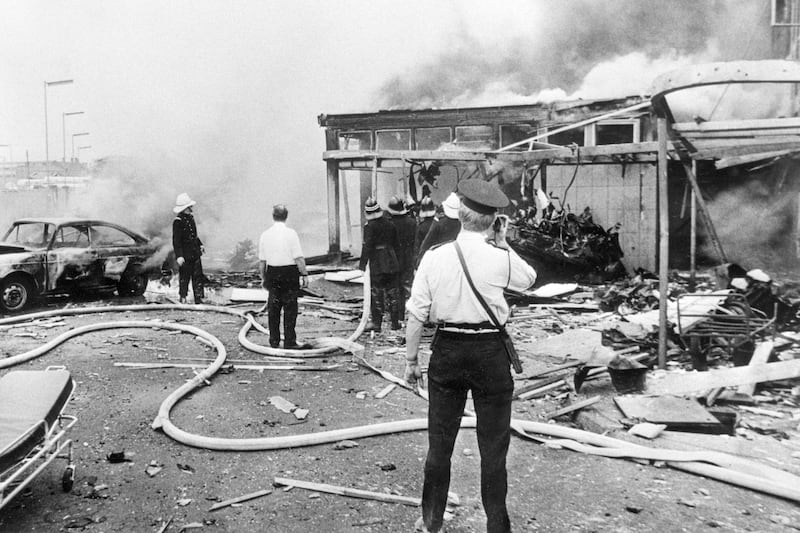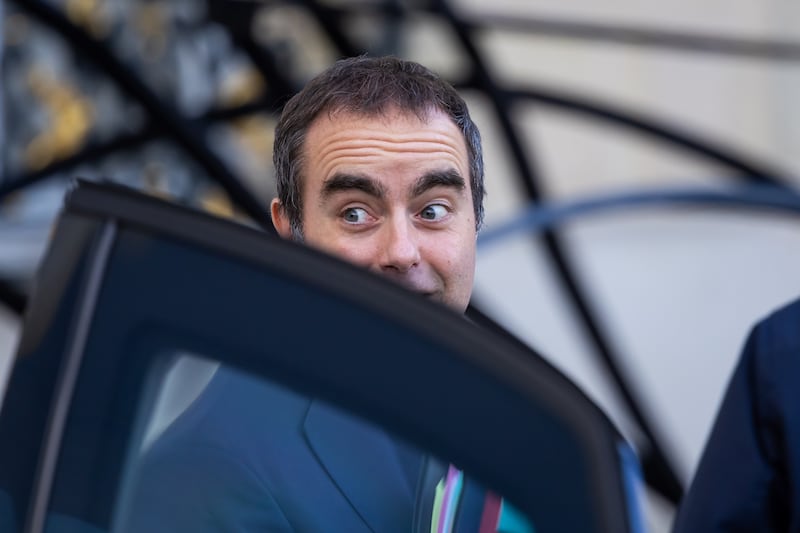Guggi, who turned 60 this year, is not resting on his laurels. With three solo exhibitions of new work, in Los Angeles, Tokyo and now the Kerlin Gallery in Dublin (he’s shown at the Kerlin since 1990), he’s been intensely busy in his Killiney studio.
He is surely happy about all this, not least because he really likes the process of painting, and always has. It agitates him slightly that there remains a common misconception that he is “a musician who paints” or a one-time musician who took to art late in the day. The reverse is the case. The art came first, the music happened semi-accidentally, but he always had it in mind to get back to making art.
If you spend some time with Guggi, you get the impression that, while he has no problem being still, his stillness always has a quality of coiled energy, of sudden movement waiting to happen
If you spend some time with Guggi, you get the impression that, while he has no problem being still, his stillness always has a quality of coiled energy, of sudden movement waiting to happen. He looks fit and vigorous, and he still wears his hair long. Very long.
Not that he’s aiming for an ageing rock-star look, though the description fits. It’s just the way he is. His commitment to letting his hair grow, he once explained, is a reaction to drastic childhood haircuts inflicted on him by his mercurial, disciplinarian father, a fundamentalist Christian.
After leaving The Virgin Prunes in the mid-1980s (he remains close to fellow Prune Gavin Friday), Guggi began to devote his attention to painting. Without question, at that point it was widely and unfairly assumed that he was giving painting a go having become disenchanted with the music industry.
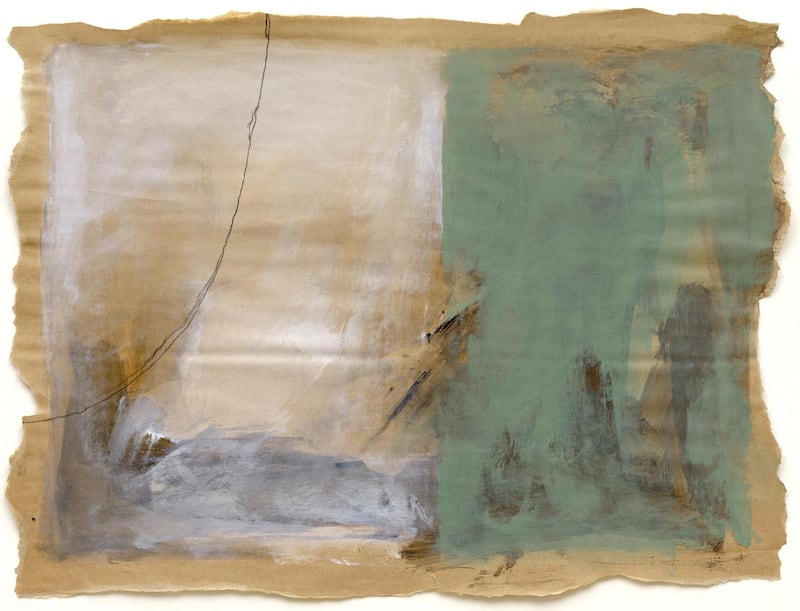
But you don’t have to take his word for his early visual flair. He and Bono grew up close to each other and have been friends since they were four or five years old. In 2010, Bono recalled how his father, who painted, would regard his and Guggi’s artistic efforts, raise his eyebrows at his son’s daubs and sing Guggi’s praises.
It is generally known that it was Guggi who came up with the name Bono. Bono Vox, in fact, was the full, prophetic version, in time abbreviated to one word. Guggi also renamed himself (from Derek Rowen), his family members and friends with words he felt more closely defined their essence. Gavin Friday (Fionan Hanvey) was also a Guggi invention.
The bowl shape that has become emblematic doubtless relates to Guggi's childhood. It's an instantly accessible symbol open to myriad interpretations
As teenagers in the 1970s, they came into contact with the experimental visual art scene in Dublin, encountering Michael Mulcahy when he was engaged in his disconcertingly extreme street theatre phase and, in the Project Arts Centre, a naked Nigel Rolfe crawling across the floor.
All of which fed into the music theatre spliced with performance art mix of The Virgin Prunes, a mix that has proved to be enormously influential with musicians since, including relatively mainstream ones, earning the group cult status. Though the extremity of Friday’s improvisations, at one point involving a lot of raw meat flying through the air, proved challenging even for enthusiasts.
Against expectation, when he turned back to art Guggi was drawn to painting still life. If he had thought about it strategically he might have come up with something more sensationalist, but on the question of painting he has always followed his instinct and is very wary about rationalising or analysing what he is doing.
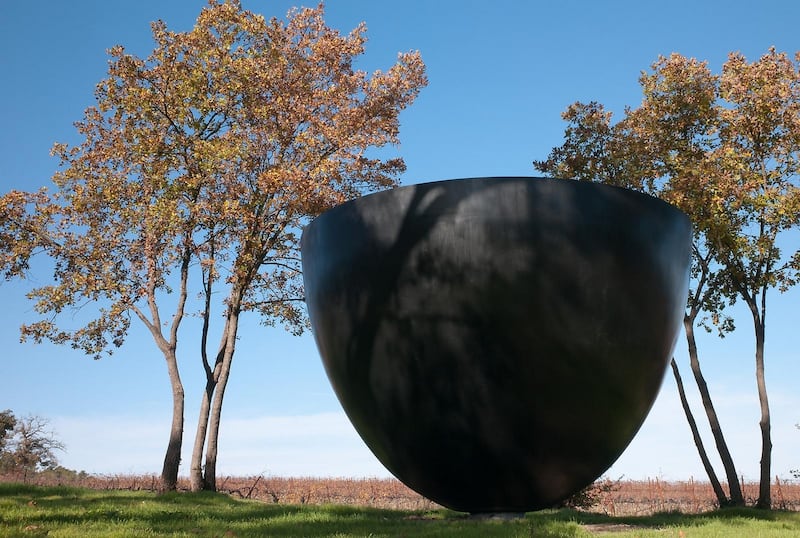
The bowl shape that has become emblematic doubtless relates to his childhood. Several potential sources have been suggested. He recalls functional enamel vessels. But most importantly, it’s an instantly accessible symbol open to myriad interpretations.
He’s always liked distressed surfaces, from rough plywood panels to, at the moment, a particular coarse-textured, ragged-edged brown paper. He applies layers of paint, scraped and scoured, often inscribed with decisive linear motifs. All of which applies to his most recent work, a series titled Broken, in which panels of colour, textured and scratched, appear roughly conjoined, under pressure, but also, paradoxically, quite lush and luxuriant.
“There might be an overload of turquoise,” he warns, sorting through them. “For some reason, turquoise has always affected me.”

The vessel is there in outline, sometimes fragmentarily, too. The title invited speculation that he was alluding to the break-up of his relationship with Sybille Ungers, which happened some time back. (They have five sons.) He is noncommittal about the connection but doesn’t rule it out. On balance, given our historical moment, it seems likely that he has in mind a more general sense of broken.
Words and numbers have recurrently played an important role in the paintings: numbers at one point when he noticed how people used to make a note of phone numbers anywhere handy. One series of works incorporates fragments of text from War and Peace, not so much for the meaning, more for the language. Another used just individual letters from the Cyrillic alphabet which, he felt, “has tremendous visual power”. The Russian emphasis might relate to the fact that his father had a particular, religiously inspired suspicion of the USSR. So Russian was inherently rebellious, and his enthusiasm for Cyrillic perhaps ties in with his penchant for devising languages of his own.
The Kerlin show includes examples of a development that emerged in his work in the past 10 years or so: bronze bowls, three-dimensional versions of the vessels ubiquitous in the paintings. The essential idea for the bowls is that “the exteriors have this dead, charcoal black patina, a surface that eats up all the light, while the inside is burnished and polished to a degree of impossible perfection.” That’s a good description and as sculptural pieces they are extremely effective.
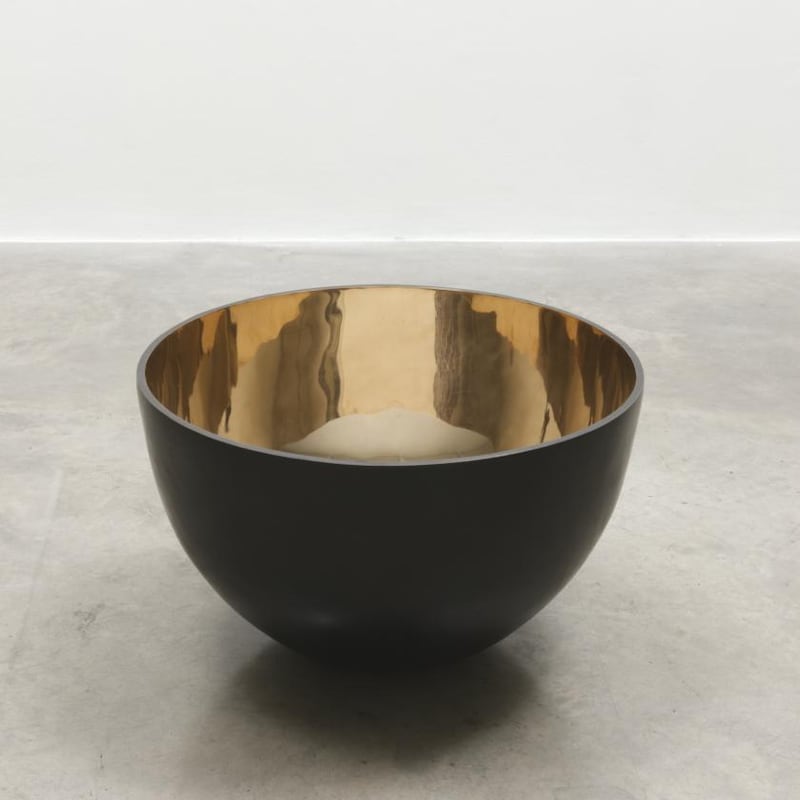
They are made by Cast foundry in Dublin. As Guggi recalls, John Rocha commissioned the first bronze bowl, then Paddy McKillen happened to see it, really liked it and commissioned one, on a monumental scale, for the sculpture park at Chateau La Coste in Provence. (Guggi has also shown some of the Broken series there.)
Guggi may not analyse his paintings, but he is self-critical and takes nothing for granted. As he shows a piece of work, he’s clearly just a little nervous, and watchful, ready to pick up the slightest flicker of a response. There are, he notes, people who never doubt themselves: “It must be strange. I mean, I’m not saying it’s bad. I wish I had more of it, but it is strange.”
The art world is known for people 'who talk the talk. It's the same as music or film in that way. You have to remind yourself that nothing happens till it happens'
The age of 60 finds him keen to follow up on everything. He hasn’t always done so, he notes, ruefully. “I know I’ve allowed opportunities to pass.” He remarks on how an artist needs a business manager, and more often than not the manager is also the artist, which is difficult. Besides, he notes, the art world is known for people “who talk the talk. It’s the same as music or film in that way. You have to remind yourself that nothing happens till it happens”.
He seems happily positioned in that regard at the moment. Besides the Kerlin, he has shows with the Yoshii Gallery in New York, and in Tokyo with Kazuhito Yoshii’s brother, who has a gallery there. And there are other projects in store. “Hardly anyone is allowed the luxury of just painting, which of course is what you want to do. But, you know, the last train is about to leave the station, and I’m not going to miss it.”
Broken is at the Kerlin Gallery, Dublin 2, until January 17th, 2020












